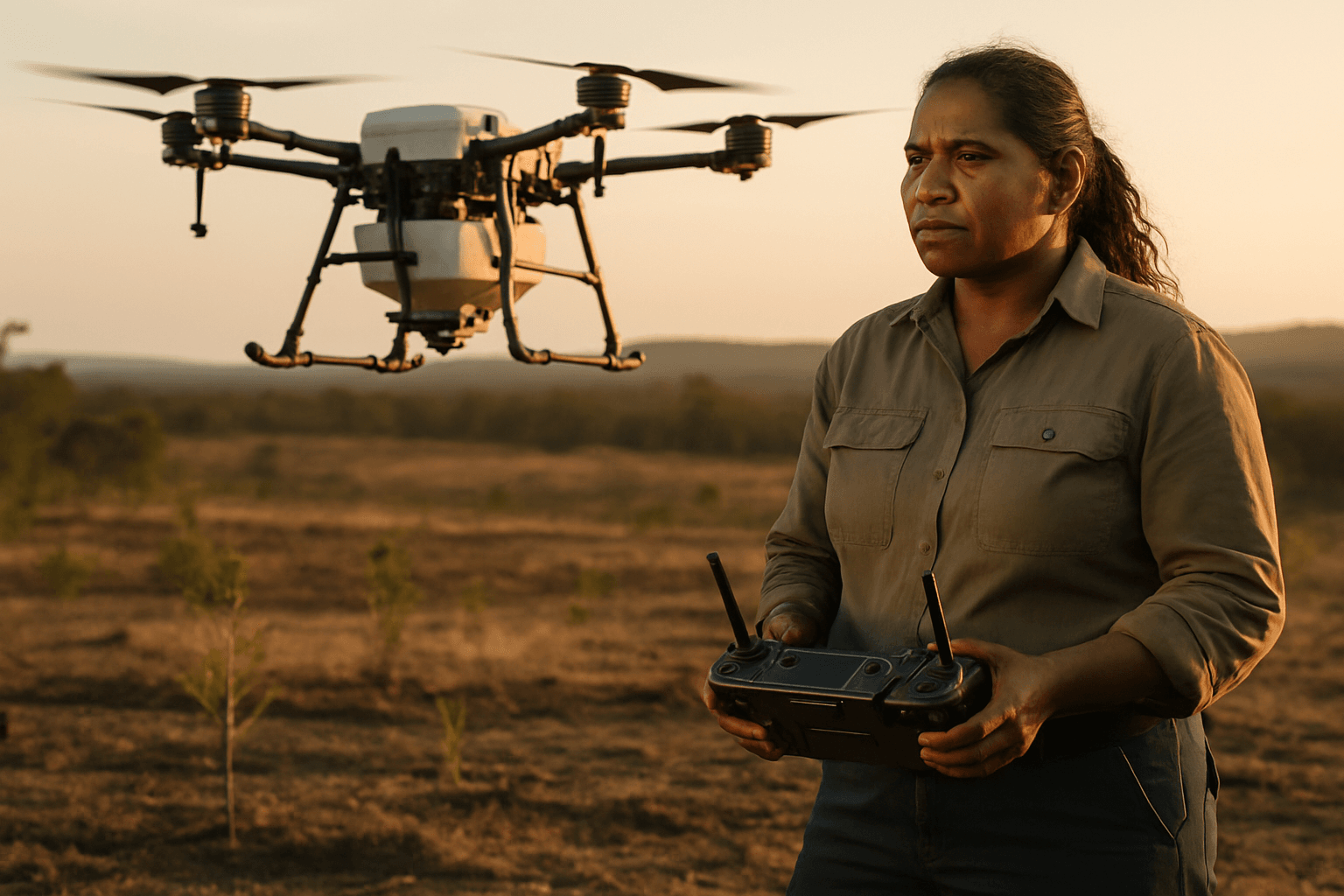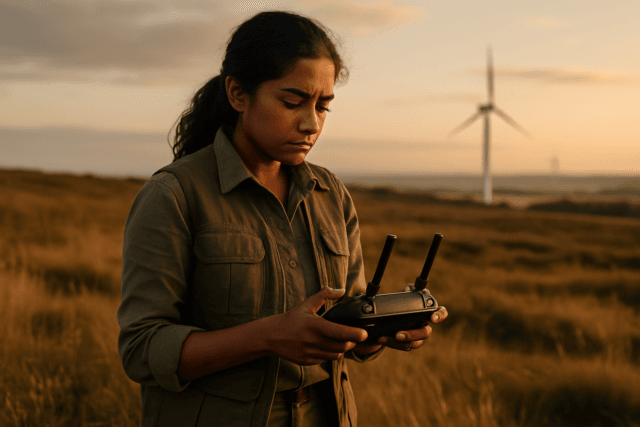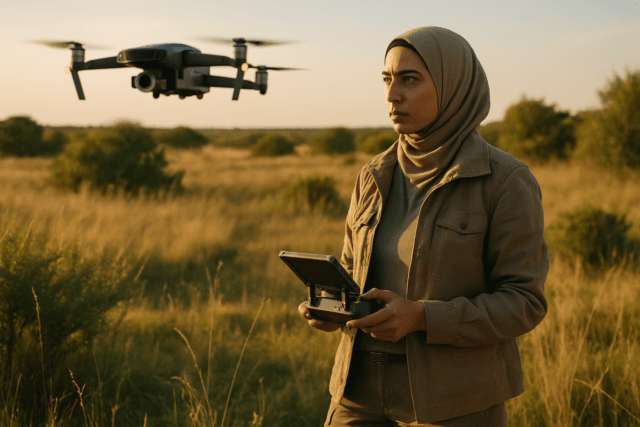The urgent global challenges of deforestation, land degradation, and the need for sustainable agricultural practices demand innovative solutions. Traditional methods of replanting and reseeding, often labor-intensive, slow, and limited by challenging terrain, are struggling to keep pace with the scale of environmental damage. Enter the drone, an unmanned aerial vehicle (UAV) that is rapidly transforming these efforts, offering a faster, more precise, and more accessible approach to restoring ecosystems and optimizing agricultural output.
The Imperative for Efficient Replanting
Manual tree planting, while effective, is a slow and expensive endeavor, often taking years to respond to events like wildfires due to the time required for nurseries to grow seedlings and for affected areas to become safe for human entry. Similarly, conventional agricultural seeding can be hampered by field conditions, soil compaction from heavy machinery, and the inability to plant into standing crops. These limitations highlight the critical need for advanced methods that can overcome logistical hurdles and accelerate restoration and cultivation.
How Drones Are Transforming Seeding Operations
Drones, equipped with advanced technology and specialized dispensing systems, are becoming a pivotal tool in both reforestation and precision agriculture.
Precision Mapping and Data Analysis
Before any seeds are deployed, sophisticated drones equipped with cameras and sensors, including LIDAR, fly over the targeted areas. This aerial mapping provides crucial data, enabling experts to:
- Identify suitable planting zones: Analyzing soil quality, moisture levels, terrain, and elevation to determine the optimal spots for seed deployment.
- Monitor environmental factors: Measuring temperature, vegetation health, and other conditions to inform planting strategies.
- Develop optimized seeding plans: AI software analyzes collected data to create precise flight paths and determine the exact number and type of seeds needed for each location.
Advanced Seed Delivery Systems
Once the mapping is complete and the seeding plan is generated, specialized drones take flight. These heavy-lift UAVs carry seed payloads and utilize various mechanisms for precise dispersal:
- Seed Pods/Vessels: Many drone reforestation projects employ proprietary seed pods or capsules that encase seeds within a mix of nutrients, minerals, and natural pest repellents. These biodegradable packets are designed to jump-start establishment, increase survival rates, and protect seeds from predation. Some systems even use compressed air to shoot seeds into the soil, ensuring they are not just scattered on the surface.
- Dispensing Mechanisms: Drones are fitted with specialized dry spreaders or granule spreading systems that ensure uniform seed distribution. This allows for precise control over sowing depth and spacing, which is crucial for optimal germination.
Automation and Swarm Technology
Modern seeding drones can fly autonomously along predefined routes, guided by GPS and AI. This allows a single human supervisor to oversee multiple drones working in a “swarm” to cover vast areas efficiently. Companies like AirSeed Technologies utilize octocopters with AI to plant tens of thousands of seeds daily.
Key Benefits of Drone Replanting and Reseeding
The adoption of drone technology for replanting and reseeding offers numerous advantages over traditional methods:
Speed and Scale
Drones dramatically accelerate the planting process. While a single person might plant around 800 trees a day manually, a drone can plant over 120 seeds per minute, with some capable of dispersing up to 250,000 seed pods per day. This allows for the reforestation of thousands of acres in a short time and enables farmers to seed large areas much faster, even immediately after rain events.
Accessibility and Flexibility
Drones can reach challenging and inaccessible terrains, such as steep slopes, wetlands, or areas devastated by wildfires, where human access might be difficult, unsafe, or impossible for heavy machinery. This flexibility also extends to agricultural applications, allowing farmers to plant cover crops into standing cash crops, which is often difficult with conventional equipment.
Environmental Advantages
Using drones minimizes soil disruption and compaction, as they operate above the ground, promoting healthier soil structure, improved water infiltration, and reduced erosion. This also leads to more efficient resource utilization by precisely placing seeds and reducing waste. Furthermore, drone seeding can support biodiversity by allowing for the targeted planting of native species.
Cost-Effectiveness
By reducing the need for extensive labor and heavy machinery, drones can lower the overall cost of reforestation and agricultural seeding. The ability to cover large areas quickly also translates to significant time savings.
Enhanced Monitoring and Data Collection
Beyond planting, drones can be used to monitor the growth and health of newly established plants over time, tracking sprout rates, plant health, and signs of erosion or invasive species. This ongoing data collection, often integrated with AI analytics, allows for better decision-making and ensures the long-term success of replanting efforts.
Challenges and Future Outlook
Despite the significant promise, drone-based seeding faces challenges that are actively being addressed:
Seed Survival Rates
One major hurdle is the relatively low survival rate of seeds dropped by drones compared to manually planted seedlings, with some pilot projects seeing 0-20% seed survival. Factors include environmental conditions like frost and drought, competition with other plants, and predation by animals. Research is ongoing to improve seed viability and placement, with innovations like specialized seed coatings and improved dispersal mechanisms.
Regulatory and Technical Limitations
Drone operations are subject to local regulations regarding licensing, airspace restrictions, and safety protocols. Drones also have limited payload capacities and battery life, requiring multiple flights for large fields and frequent battery changes. Further technological advancements are needed in areas such as energy autonomy and sophisticated decision-support systems.
Integration with Existing Methods
Experts emphasize that drone technology is intended to complement, rather than completely replace, traditional manual planting. It serves as a powerful tool, especially for hard-to-reach areas and large-scale, rapid deployment.
As technology continues to evolve, the integration of drones with AI, advanced sensors, and biotechnologically enhanced seed pods promises to further refine and expand their utility in replanting and reseeding. Drones are poised to play an increasingly vital role in creating a more sustainable future, aiding in the restoration of degraded landscapes and bolstering global food security.





